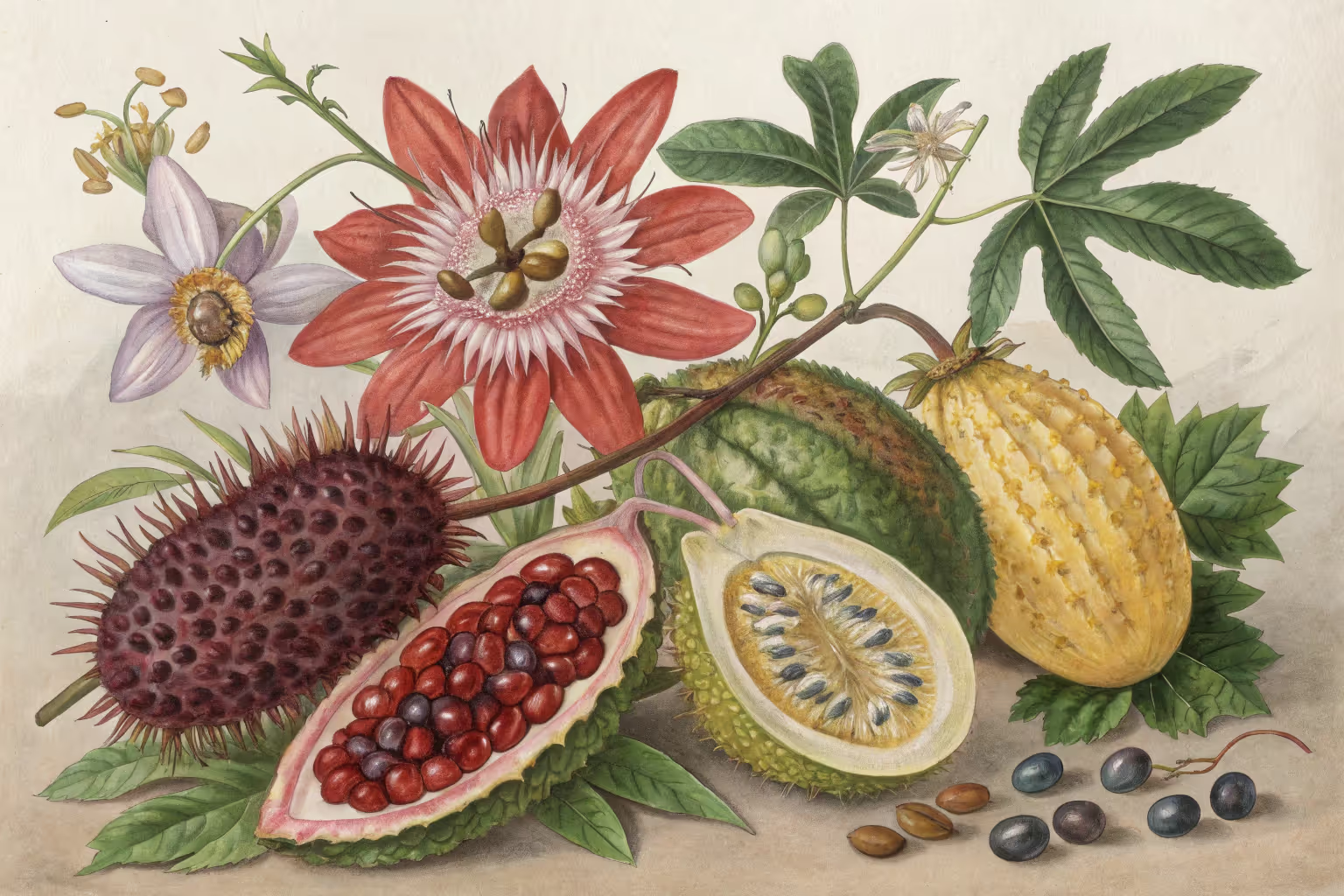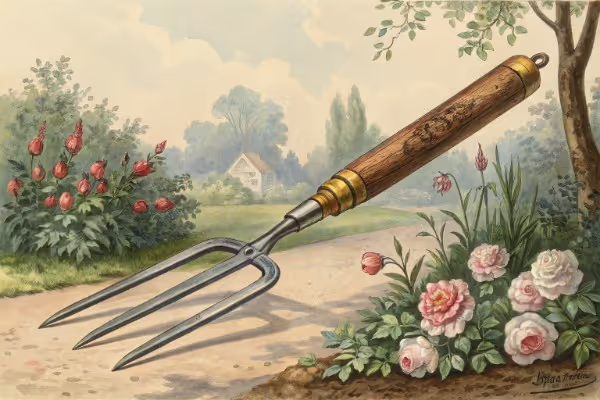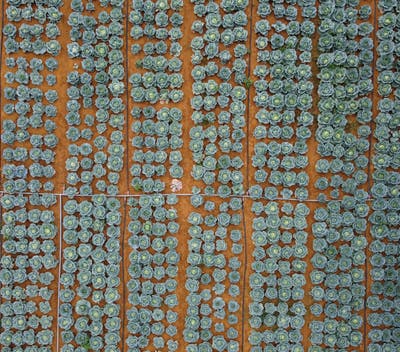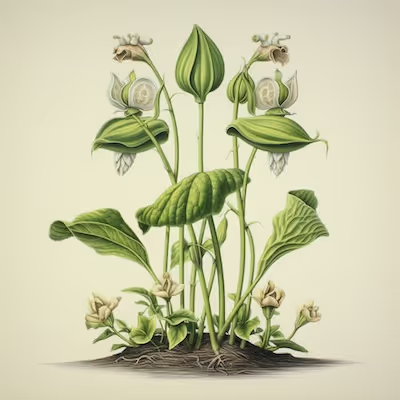Native Plant Seeds: Cultivating Local Beauty in Your Garden

Native plant seeds
Native plant seeds punch above their weight—fueling pollinators, slashing maintenance, and rooting deep to heal soil. Collect native plant seeds in your region to preserve local genetics and create resilient habitats. By sowing native plant seeds, you invest in a wilder, healthier backyard that buzzes with life.
Curious how to source, store, and sow them for a yard that truly thrives? Let’s dig in.
Cheatsheet: Native Seeds for Local Garden Impact
🌱 Why Native Seeds?
- Up to 75% less water needed vs. exotics
- Support pollinators & wildlife
- Boost soil health & resilience
- Zero chemical fertilizer needed
- Self-seeding = future savings
- Promote biodiversity
🛠️ Tools and Products You’ll Need
- Garden trowel or dibber
- Native seeds (select by local ecoregion)
- Seed trays or pots (for indoor start)
- Spray bottle for misting
- Well-draining, chemical-free potting mix
- Labels & pencil
- Fine mesh or sand (for small seeds)
🌦️ Best Planting Time
- Spring or fall for direct sowing
- Chill-requiring seeds: sow outdoors Oct–Dec (34–45°F / 1–7°C)
- Warm germinators: late spring, after last frost (55–75°F / 13–24°C)
🔢 Steps to Succeed
- Find local seed sources: Seek regional suppliers or native plant societies.
- Prep soil: Weed, loosen top 2–3 in (5–7 cm), and moisten.
- Check dormancy needs: Some seeds need moist chilling (stratification) for 2–12 weeks.
- Sow shallow: Press seeds into surface or cover lightly (1/8–1/4 in / 0.3–0.6 cm max).
- Mist to settle. Avoid drenching; keep moist, not soggy.
- Protect: Use mesh, netting, or row cover against birds & wind.
- Thin seedlings: Space to at least 4 in (10 cm) for strong growth.
- Mulch lightly: Use leaf mold or straw after emergence.
- Minimize water once established.
- Let seed heads ripen—for natural reseeding & wildlife food.
🌻 Health & Self-Sufficiency Perks
- Native edibles: try wild strawberry, bee balm, or elderberry
- Reduce allergens, pesticides, and watering bills
- Pollinator gardens: fresh herbs & more fruit yield
📈 Pro Stats
- Native gardens attract 3x more butterflies
- Mature plants cut yard work by 50%
- Support 90%+ of local birds’ diets (source: Audubon)
I plant for place, then let time do the heavy lifting. Native plant seeds let me grow a garden that behaves like the landscape around it, resilient, thrifty, full of life.
The payoff builds season after season, soil breathes easier, birds show up, and watering turns into spot care rather than a ritual.
Native plant seeds carry local memory, they match your climate, day length, soils, and the insects that evolved beside them. That match translates to sturdier plants, richer habitat, and lighter maintenance.
I have converted lawn to prairie on compacted subsoil and watched irrigation drop by half after year two, the plants knew the script better than I did.
“35 percent of global crop production depends on pollinators.” FAO, supported by IPBES assessments
Plant natives and you feed the pollinators that feed you. That bargain never goes out of style.
“96 percent of terrestrial birds rear their young on insects.” Douglas W. Tallamy, University of Delaware
Local insects need local plants, and seed-grown stands host far more caterpillars than ornamental imports. Oaks alone can support hundreds of moth and butterfly species in North America, a living pantry in plain sight.
- Seed: lowest cost, widest genetic diversity, slower start. Great for meadows, bioswales, large beds, and anyone with patience.
- Plugs: mid cost, faster cover, easier weed suppression in year one. I use plugs to stitch structure through seeded areas.
- Containers: highest cost, instant impact, limited genetics. Perfect for focal points and tough microclimates.
On price, seed often runs 0.15 to 1.50 USD per square foot, plugs 3 to 8 USD per plant, and containers more. I mix all three in one design, seed the field, plug the bones, pot the drama.
Ask for local ecotype or regionally sourced seed, it preserves timing and chemistry that local wildlife expects. Straight species typically serve wildlife better than heavily bred cultivars with altered nectar or bloom cues.
Read the tag, look for PLS or pure live seed percentage, germination test date within 12 months, and seed lot origin. Skip seed treated with neonicotinoids, residues move into nectar and pollen where they do harm.
- Seek growers who follow state noxious weed lists and provide lab tests.
- Choose species-level mixes instead of vague “wildflower” blends that hide nonnative ornamentals.
- Buy enough carrier, rice hulls or clean sand help spread fluffy seed evenly.
Reputable sources I trust and use include Xerces Society plant lists, USDA NRCS plant materials guidance, and the Lady Bird Johnson Wildflower Center database. In the UK, the RHS and Flora locale publish solid provenance guidance.
I never rush this step, prep is the difference between a meadow and a weed patch. Remove existing vegetation by smothering for 4 to 8 weeks, or solarize in peak summer with clear plastic for 6 to 8 weeks on heavy weed banks.
On small beds, a sharp spade and a rake beat herbicides, cleanly peel turf and decompact with a garden fork. For bigger areas, I run two stale seedbeds, water to germinate weeds, then shallowly disturb the top half inch 1.2 cm to knock them back.
Fall sowing lets winter do the stratification for free, sow after consistent nights below 45 F 7 C and before soil locks up. Spring sowing works after refrigerator stratification, I aim for soil at 50 to 60 F 10 to 16 C for many perennials.
Frost seeding on late winter snow paints a map, as the snow melts it pulls seed into perfect contact. I have had stellar stands from a February morning and a coffee thermos.
Many natives need cold moist stratification, a fancy way to say “chill while damp,” mimic winter at 34 to 41 F 1 to 5 C for 30 to 90 days. I use a labeled bag, barely moist vermiculite, and a beer fridge I trust.
Some hard-coated seed wakes after scarification, a few seconds of sandpaper, a nick with nail clippers, or a brief soak in hot water around 110 F 43 C. Others crave light, so I press them into the surface and never bury them.
General rule, plant no deeper than two to three times the narrowest seed width. Many wildflower seeds want the surface, they need light to trigger germination.
Blend seed with 3 to 10 parts dry carrier per part seed for even spread. I use a hand crank spreader for big areas and my palm for the tricky corners.
Rake very lightly, then roll or tamp to firm seed against soil. A whisper of clean straw or hydromulch helps retain moisture, keep it under a quarter inch 6 mm.
Keep the top quarter inch 6 mm moist until germination, often a light pass daily in heat or every few days in cool spells. After true leaves, taper to deeper, less frequent watering so roots chase moisture.
EPA WaterSense notes native and climate adapted plants can cut outdoor water use by roughly 20 to 50 percent, once established
I see that range in my own records, a prairie bed sips compared to a bluegrass lawn.
Expect green and low the first season, roots run while flowers bide their time. Mow or string trim to 4 to 6 inches 10 to 15 cm whenever annual weeds try to shade seedlings.
Hand pull bullies before they set seed, target thistles, bindweed, and aggressive foxtails. By year two the natives start to police the space for you.
Group plants in drifts of 5 to 15, it helps pollinators find them and makes the garden read as intentional. Anchor with grasses for structure, little bluestem and prairie dropseed hold snow, filter water, and carry the show in winter.
Layer bloom from April to November, think spring ephemerals, summer nectar, late autumn pollen and seed. I plant goldenrods and asters for the closing act, they feed pollinators right to frost.
- Northeast and Upper Midwest: little bluestem Schizachyrium scoparium, wild bergamot Monarda fistulosa, purple coneflower Echinacea purpurea, smooth aster Symphyotrichum laeve, showy goldenrod Solidago speciosa.
- Great Plains: prairie dropseed Sporobolus heterolepis, black-eyed Susan Rudbeckia hirta, prairie clover Dalea purpurea, sideoats grama Bouteloua curtipendula, butterfly milkweed Asclepias tuberosa.
- Southeast: lanceleaf coreopsis Coreopsis lanceolata, scarlet sage Salvia coccinea, muhly grass Muhlenbergia capillaris, narrowleaf sunflower Helianthus angustifolius, blue mistflower Conoclinium coelestinum.
- Southwest and Intermountain: desert marigold Baileya multiradiata, Palmer’s penstemon Penstemon palmeri, blue grama Bouteloua gracilis, apache plume Fallugia paradoxa, globe mallow Sphaeralcea ambigua.
- Pacific Northwest: camas Camassia quamash, Oregon sunshine Eriophyllum lanatum, red columbine Aquilegia formosa, tufted hairgrass Deschampsia cespitosa, farewell-to-spring Clarkia amoena.
- California: California poppy Eschscholzia californica, tidy tips Layia platyglossa, foothill penstemon Penstemon heterophyllus, yarrow Achillea millefolium var. californica, purple needlegrass Stipa pulchra.
Always match species to your county and soil, the Lady Bird Johnson Wildflower Center database and your state native plant society help you dial it in. Local nurseries with seed racks are gold, they know the misses as well as the hits.
Milkweeds feed monarchs, plant common A. syriaca for fields and swamp A. incarnata for rain gardens. Goldenrods and asters carry late season bees, pair Solidago rugosa with Symphyotrichum novae-angliae and watch the yard hum.
In my coastal plot, native seaside goldenrod Solidago sempervirens shrugged off salt spray and drew monarchs in September. In sand, I lean on hairy beardtongue Penstemon hirsutus for spring bees and tidy clumps.
Prairie grasses tolerate lean soils and handle pH 6.0 to 7.5, many wildflowers forgive swings if drainage is honest. Wet feet lovers like Joe Pye Eutrochium and blue flag iris Iris versicolor thrive in rain gardens and swales.
I test soil every few years, then adjust only for glaring issues. Compost in a thin layer at establishment helps water holding without making the site too rich.
- Overseeding shade species in full sun, they crisp by July. Use sun natives where the light is relentless.
- Burying fine seed too deep, surface press instead. Light triggers germination in many asters and milkweeds.
- Mixing aggressive nonnatives into a native bed. Read labels on “wildflower mix” bags, many hide annual ornamentals.
- Skipping the mow in year one. Mowing controls weeds without harming deep-rooting seedlings.
No plant is deer proof, but some taste worse than others. I lean on aromatic foliage like Monarda and Pycnanthemum, and I cage young oaks until they get a head start.
For rabbits, a 24 inch 61 cm low fence buys a season. Patch losses with new seed after the first soaking rain.
Never collect seed from rare plants, and always with landowner permission. State heritage programs list protected species, check before you pocket anything.
In some municipalities, front yard meadow height needs an edge and a sign. I use a mowed frame and a small plaque, it reads like design, not neglect.
- Light required, press in, do not cover: many asters, goldenrods, milkweeds.
- Cold moist stratify 30 to 90 days at 34 to 41 F 1 to 5 C: coneflowers, penstemons, baptisias.
- Scarify hard seed coats: redbud Cercis, lupines Lupinus, prairie clovers Dalea.
- Warm stratify 60 to 77 F 16 to 25 C then cold, some woodland species and shrubs.
I label each bag with species, start date, and target sow week. The discipline saves guesswork when spring gets busy.
For meadow blends, I aim for 40 to 60 seeds per square foot with about 30 to 40 percent grasses by seed count. Convert vendor rates to PLS so you know the living seed you are putting down.
On two acres, I split the order into four batches and sow in perpendicular passes, that evens out my human error. A rainy forecast is the best teammate you can hire.
- Native-focused seed houses with regional ecotypes, ask for provenance by ecoregion or county.
- Conservation seed growers for large quantities, request purity, germination, and dormancy notes.
- Botanic garden seed exchanges for rarer locals, small packets, high trust.
I ask three questions, where was the parent stock collected, what is the current PLS, and has the seed been treated. Straight answers build confidence fast.
In meadows, a late winter mow at 6 inches 15 cm clears old stems and leaves seed on the ground for birds. In beds, I edit by hand, removing thugs and adding fresh seed to gaps after a hard rain.
Leave some hollow stems 8 to 18 inches 20 to 45 cm for native bees, they nest in those pithy tubes. A tidy edge satisfies neighbors and gives you a clean line to work against.
On a 600 square foot 56 square meter front yard meadow, I logged 40 percent fewer irrigation minutes by the second summer, then cut it again in year three. Bee species jumped from a handful to dozens across the season, anchored by asters and mountain mint.
The best surprise was sound, goldfinches arguing on coneflower seed heads in August. That is the kind of data I want more of.
- How long do native plant seeds last, cool and dry storage extends viability, many species stay strong 2 to 5 years, some grasses much longer.
- Can I overseed into turf, yes if you scalp, topdress with 0.25 inch 6 mm compost, and keep it moist, but the mix should favor tough sun perennials and short grasses.
- Do I need fertilizer, usually no, natives prefer lean soil, add compost sparingly for structure, not for surge growth.
- Will seed mixes cross with nearby ornamentals, rarely an issue with perennials, but avoid seeding near invasive lookalikes like crown vetch.
Xerces Society guides on pollinator habitat and native seed sowing, USDA NRCS Plant Materials and PLS standards, and the Lady Bird Johnson Wildflower Center plant database. EPA WaterSense for outdoor water use data, FAO and IPBES for pollination statistics, and research by Douglas Tallamy for host plant and bird diet relationships.

Want smarter plant choices? 🪴
Frequently Asked Questions
How should I store seeds before sowing?
Store seeds in a cool, dry place. Maintain temperatures between 32-41°F (0-5°C) and use airtight containers. Avoid humidity and direct sunlight to prevent premature sprouting and mold.
When is the best time to sow seeds suited to my region?
Check your local frost dates and choose either fall or early spring, depending on the natural germination patterns of the species. Autumn sowing often works best for plants that require a winter chill (cold stratification). In regions with mild winters, late winter or early spring planting may yield better results.
How deep should I plant them?
Most require a planting depth of 1/8" to 1/4" (3-6 mm). Some need light to germinate—press these lightly into the soil without covering. Always check the instructions for each species, since requirements may vary.
Do seeds require any special treatment before sowing?
Some species benefit from cold stratification—simulating winter conditions by refrigerating moist seeds for 1-3 months. Others may need scarification—scratching or nicking the seed coat—to encourage germination. Refer to guidance based on the species for best results.
How much sunlight is necessary for successful germination and growth?
Most thrive with at least 6 hours of direct sunlight per day. For shade-tolerant varieties, aim for 3-4 hours of filtered sunlight. Monitor young seedlings to avoid scorching during summer months, especially in southern latitudes.
How often should I water after sowing?
Keep the soil consistently moist—but never soggy—until seedlings establish. Lightly mist the soil or use a gentle spray to avoid displacing seeds. Once seedlings appear, gradually reduce watering as the roots develop.
Can I sow directly outdoors, or should I start indoors?
Many varieties prefer direct sowing outdoors for best results, mirroring their natural cycles. For species with slow germination or in regions with short growing seasons, starting indoors may extend the growing window and improve success rates.
Planting native plant seeds is a love letter to your region’s wild soul. You get beauty that looks right at home, plus tough, drought-savvy plants that play well with local birds and pollinators. No fussy upkeep, just honest growth and a little less guilt about water use. Your soil stays healthier, weeds don’t stand a chance, and your garden hums with life that belongs. If you want more ideas for plants that thrive where you live, check out this guide to North American plants by climate zone. In the end, sowing native plant seeds is less about control and more about connection—letting your patch of earth sing its own tune.
The Science of Native Seed Resilience
Native seeds pack genetic diversity unmatched by cultivated varieties. Wild populations continuously adapt, so their seeds express complex survival traits—resistance to local pests, fungi, and inconsistent moisture. Studies show native forbs and grasses persist 60% longer in challenging sites compared to common ornamentals.
Seed dormancy in natives isn’t accidental—built-in triggers like temperature, fire, or microbial exposure ensure germination only under optimal conditions, protecting next generations from drought or frost.
Germination Cues and Pre-Treatments
- Cold Stratification: Mimic winter by refrigerating seeds (33-41°F / 0.5-5°C) on moist medium for 30-120 days—essential for Echinacea, Lupine, Milkweed.
- Scarification: Nick hard seed coats with sandpaper or soak in hot water (120°F / 49°C). Needed by Wild Indigo, Leadplant.
- Smoke/Heat Exposure: Briefly expose certain prairie or chaparral natives to smoke water or 150°F dry heat (65°C). Triggers Penstemon, Ceanothus.
Adaptive Advantages for Self-Sufficiency
Locally sourced native seed yields 18% higher establishment rates and requires 40% less supplemental water in the first three years (source: Tallgrass Prairie Center). Deep roots—some reach 15 ft (4.5m)—mine nutrients and create self-renewing soil. Native edible seeds (e.g., Amaranth, Wild Sunflower) contain higher trace mineral content and offer reliable protein security.
Seed Longevity and Storage
- Store dry seeds in airtight containers at 35-40°F (1.5-4°C), 30-40% humidity—most remain viable 3-7 years.
- Wildflower mixes last longest when packeted with desiccant packets and away from light.
- Document collection site and year—local adaptation data multiplies value for barter, resilience planning, and regional seed banking.
Local Provenance Multiplies Value
Reseed with wild-collected, ecozone-matched sources. Within a single species, drought resistance can vary up to 200% between provenances. Trade within your watershed for the most reliable, climate-adapted genetics. Value soars in crisis—native seed fetches up to 10x annual price during replanting surges.
Find out which plants will thrive in your garden!
Answer a few fun questions and get custom plant recommendations perfect for your space. Let’s grow something amazing together!

start your season
.avif)




